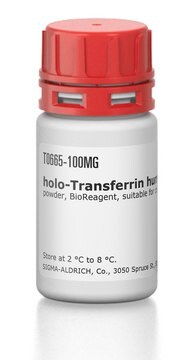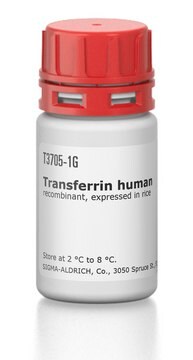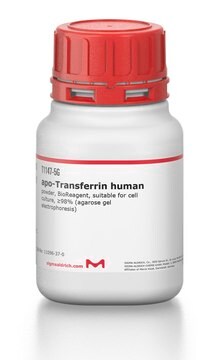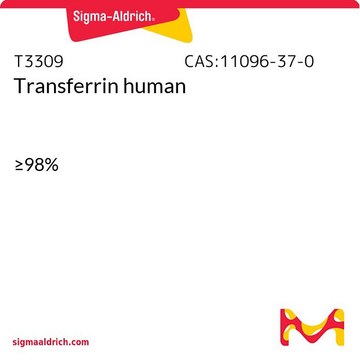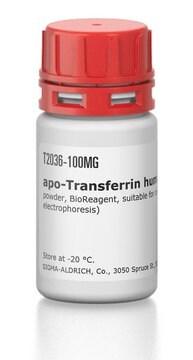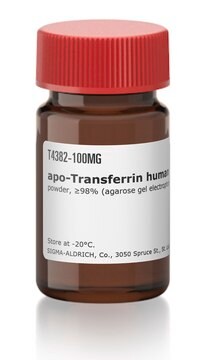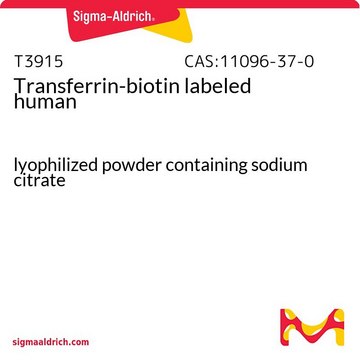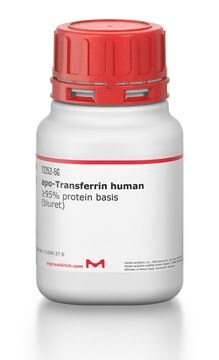T4132
holo-Transferrin human
≥98%
Synonym(s):
Siderophilin, iron-saturated
About This Item
Recommended Products
biological source
human
Quality Level
Assay
≥98%
form
powder
Iron content
1100-1600 μg/g
technique(s)
cell culture | mammalian: suitable
impurities
HIV, hepatitis B and hepatitis C, none detected
UniProt accession no.
storage temp.
2-8°C
Gene Information
human ... TF(7018)
Looking for similar products? Visit Product Comparison Guide
General description
Application
- in colony-forming assays
- for transferrin uptake and recycling in transfected HEK-293 (human embryonic kidney) cells or bone marrow cells
- for the preparation of luteinizing and non- luteinizing granulose cells
Biochem/physiol Actions
Analysis Note
Disclaimer
Storage Class Code
11 - Combustible Solids
WGK
WGK 3
Certificates of Analysis (COA)
Search for Certificates of Analysis (COA) by entering the products Lot/Batch Number. Lot and Batch Numbers can be found on a product’s label following the words ‘Lot’ or ‘Batch’.
Already Own This Product?
Find documentation for the products that you have recently purchased in the Document Library.
Customers Also Viewed
Protocols
Separation of HPLC protein standard mixture, analytical standard
Our team of scientists has experience in all areas of research including Life Science, Material Science, Chemical Synthesis, Chromatography, Analytical and many others.
Contact Technical Service